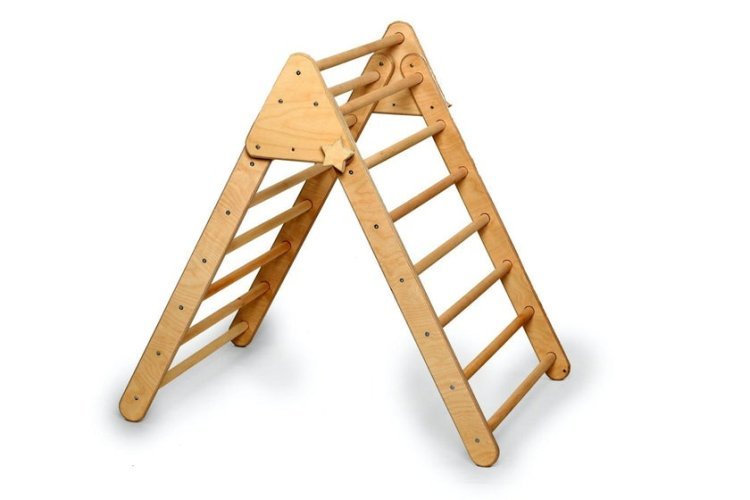What Age Range is Suitable for a Pikler Triangle Set?

The Pikler triangle, originally designed by Hungarian pediatrician Dr. Emmi Pikler, has gained popularity as a versatile and engaging tool for children's physical development. It consists of a sturdy wooden triangle structure with rungs or steps, encouraging children to climb, explore, and develop their motor skills. One common question parents and caregivers often have is: What age range is suitable for a Pikler triangle set? Let's explore this topic in detail.
Understanding Developmental Stages
To determine the appropriate age range for a Pikler triangle set, it's essential to understand children's developmental stages, particularly in terms of gross motor skills. You can also consider wooden toys for kids. Children typically go through various stages of physical development, starting from infancy through early childhood.
- 1. Infancy (0-12 months): During this stage, infants are primarily focused on developing foundational skills like grasping, rolling over, and eventually crawling. While a Pikler triangle is not designed for infants, it indirectly supports early development by encouraging freedom of movement in a safe environment.
- 2. Toddlerhood (1-3 years): This is the primary age range where a Pikler triangle set becomes highly beneficial. Toddlers are actively exploring their environment, refining their balance, coordination, and strength. The Pikler triangle provides a safe structure for climbing, helping toddlers build confidence and independence.
- 3. Preschool Age (3-6 years): Older children within this age range can also benefit from a Pikler triangle, using it for more advanced climbing and play activities. The versatility of the triangle allows children to invent imaginative games and challenges, promoting creativity and physical fitness.
Suitability Factors
Several factors determine the suitability of a Pikler triangle for different age groups:
- Physical Development: Children must have sufficient motor skills and coordination to navigate the climbing structure safely. Toddlers who can stand, walk independently, and climb stairs with supervision are generally ready for a Pikler triangle.
- Safety Considerations: While Pikler triangles are designed with safety in mind, adult supervision is crucial, especially for younger children. Parents should assess their child's readiness based on their individual abilities and temperament.
- Interest and Engagement: The ideal age range for a Pikler triangle correlates with a child's natural inclination to explore and climb. Most children show a keen interest in climbing activities during the toddler and preschool years.
Benefits for Different Ages
- 1. Toddlers (1-3 years): This age group benefits immensely from the Pikler triangle's focus on gross motor skills. Climbing strengthens muscles, improves balance, and enhances spatial awareness—all crucial for early childhood development.
- 2. Preschoolers (3-6 years): Older children can use the Pikler triangle for more advanced activities, fostering creativity and problem-solving. It becomes a versatile play tool that adapts to their growing abilities and interests.
Introducing a Pikler Triangle Safely
When introducing a Pikler triangle to a child, consider the following tips:
- Start Slowly: Allow your child to become comfortable with the structure before attempting more challenging climbs.
- Supervise Closely: Always supervise young children while they use the Pikler triangle to prevent accidents.
- Encourage Exploration: Let your child explore and experiment at their own pace, fostering independence and confidence.
Conclusion
The suitable age range for a Pikler triangle set generally starts around 1 year old and extends through early childhood. However, every child is unique, so parents should assess their child's readiness based on developmental milestones and individual capabilities. When used appropriately, a Pikler triangle can be a valuable addition to a child's play environment, promoting physical development, creativity, and joyous exploration.
What's Your Reaction?











![Wireless Connectivity Software Market Size, Share | Statistics [2032]](https://handyclassified.com/uploads/images/202404/image_100x75_661f3be896033.jpg)



